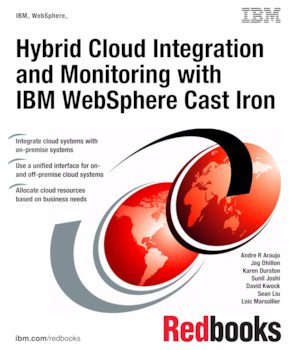Hybrid Cloud Integration and Monitoring with IBM WebSphere Cast Iron
An IBM Redbooks publication
Note: This is publication is now archived. For reference only.

Published on 14 December 2012
ISBN-10: 0738437603
ISBN-13: 9780738437606
IBM Form #: SG24-8016-00
Authors: R Andre Araujo, Jag Dhillon, Karen Durston, Sunil Joshi, David Kwock, Sean Liu and Loic Marsollier
Cloud computing is fast emerging as a new consumption and delivery model for IT solutions. Two distinct cloud patterns have evolved. Private clouds are custom cloud applications that are on premise to companies. Public clouds are owned and managed by a service provider and are delivered on a pay-per-use basis. Although the debate between the use of private versus public cloud continues, the industry is moving ever faster toward a hybrid solution. Hybrid clouds address the integration of traditional IT environments with one or more clouds, private and public.
IBM® WebSphere® Cast Iron® along with the IBM Tivoli® Service Management Extensions for Hybrid Cloud supports the integration of private and public clouds.The Service Management Extensions for Hybrid Cloud supports the following scenarios:
Part 1. Introduction
Chapter 1. Overview of hybrid clouds
Chapter 2. Integrating cloud solutions with Cast Iron
Chapter 3. IBM Cloud Service Management Platform
Part 2. Usage scenarios
Chapter 4. Monitoring scenario
Chapter 5. Provisioning scenario
Chapter 6. Directory Synchronization scenario
Chapter 7. Workload Governance and Management scenario